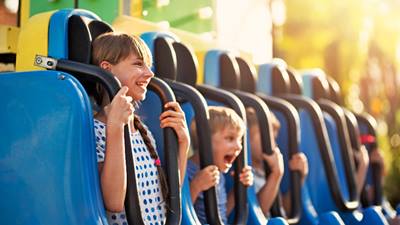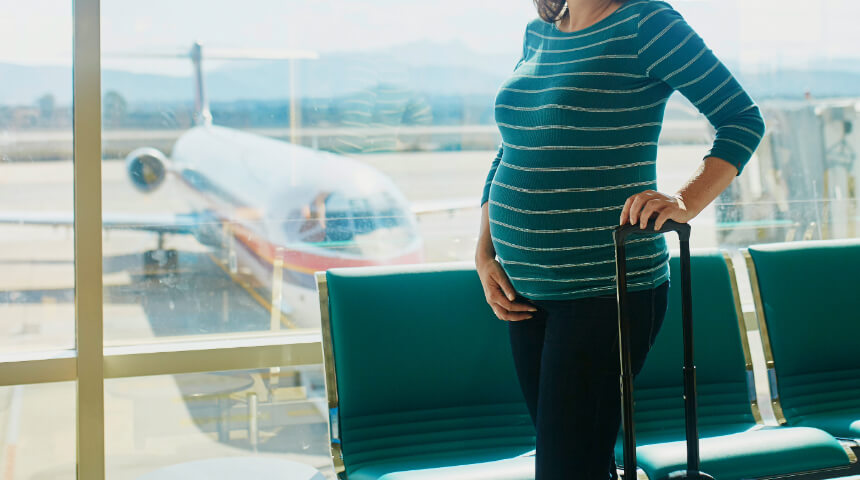Safety Tips to Make Your Amusement Park Experience a Success
Spending time at an amusement park with your kids is a staple of summer fun, especially here in Orlando. But without taking the right precautions, any trip can become memorable for the wrong reasons. From dehydration to sunburn to accidents, amusement parks come with their share of risks. By preparing ahead of time, parents and caregivers can ensure that the entire family has fun and stays healthy.
Here are tips to help make your amusement park experience a success:
Protect Against Sunburn
Sunburn is one of the biggest health risks amusement park visitors face, and infants and children are particularly susceptible. It’s important to monitor your child’s sun exposure throughout the day, even if the sky is overcast.
To protect against sunburn, children under 6 months of age should avoid exposure to direct sunlight. Sunscreen isn’t recommended for use in this age group, so use canopy shades on strollers, sun hats and protective clothing instead. If no shade is available, the American Academy of Pediatrics (AAP) recommends applying small amounts of sunscreen only to exposed areas, such as the back of the neck and hands.
For children over 6 months, continue to use sun barriers and provide another layer of protection with sunscreen. As directed by the AAP, always use a sunscreen with SPF 15 or greater. Apply sunscreen at least 30 minutes before you arrive at the theme park, as sunscreen is most effective when applied prior to sun exposure. Apply it generously and at least every two hours, especially if children are sweating or in water.
Keep Kids Hydrated
Dehydration can occur any time an insufficient amount of water is consumed. On a hot day when children are running, playing and sweating, dehydration can set in much quicker. It’s vital to have your children drinking enough water in-between rides.
Infants under 6 months of age should be kept hydrated through breast milk or formula. From 6 months to 12 months, babies can be introduced to water in a sippy cup, but should still receive most of their hydration from breast milk or formula. For kids, the amount of water consumed varies by age, weight and health status. Remember, if your child is sweating significantly or more active, their water needs also will increase.
Avoid giving children drinks with large amounts of sugar, such as juice or soda. Plain water is best. Most healthy children also don’t need sports drinks or electrolyte beverages, which contain large amounts of sugar and empty calories. If your child has any special healthcare needs, especially kidney or intestinal problems, you should talk to your pediatrician about their special needs beforehand.
Pack Healthy Snacks
Amusement parks are famous for their fried foods, sugary treats and salty snacks. But these types of foods only provide bursts of energy instead of sustaining children for the day. You may find yourself with a pack of cranky kids on your hands just an hour or two after snacktime.
To keep kids healthy and engaged, bring along snacks with complex sources of carbohydrates and proteins. Foods like peanut butter, cheese and crackers, fruit with granola or nuts, or whole grain muffins are great choices.
Be Prepared for Injuries and Illness
Water, sunscreen and healthy snacks will all help ensure a happy day of riding the rides. Other health issues can arise though, which is why it’s wise to pack a small amusement park care kit. Bandages, for instance, are perfect for small injuries. Insect repellent will help prevent bites. Consider also locating the theme park’s first aid station on the map before starting your day.
Avoid Exhaustion and Overexcitement
A theme park can be a place of wonder and excitement. For a tired toddler or young child, though, it also can become an overwhelming blur of sights, sounds and people. Have a plan for when tantrums or meltdowns happen. Try to find a quiet place away from all the stimulation where your child can have a few minutes of “time out.” If your child is younger and has a comfort item, have it on hand. And don't forget to maintain your child's normal nap time. A snooze in the stroller for 30 minutes might be nice, but it won't replace a solid afternoon nap in a cool and calm room.
Respect the Rules and Stay Together
Always follow posted signs about rules for rides. Don't let your children talk you into riding a ride they are “so close” to being the right height or weight for. Being slightly too small may mean that the safety equipment won't protect them.
Remember that crowded amusement parks are an easy place for kids to get separated from the pack. Always make a plan beforehand for what to do if anyone is lost. Have up-to-date pictures on a cell phone or in your bag. Make sure children know the names and phone numbers of the adults in charge. And for very young children, write your phone number on their arm under their sleeve, pinned to the inside of their clothes or in a pocket. Also, decide on a particular spot to meet that everyone knows. If you have older kids who will be exploring on their own, plan regular meetups.
Other Safety Considerations to Keep in Mind
Consider bringing a few non-essentials on your trip to the park. Storing a change of clothing in the car can be a lifesaver in case young children vomit or get wet. And don’t forget the diapers when vacationing with babies!
If you're planning a full day of fun, make sure everyone wears good walking shoes or—in the case of visiting a water park—comfortable sandals. Blisters or a foot injury can quickly bring a great day to an end. While situations may arise, with a bit of preparation, kids will only remember the fun.
Are You Interested in Learning More?
Sign up for our e-newsletter for more tips and best practices from pediatricians.
Sign Up Here




